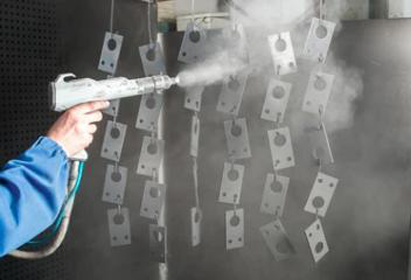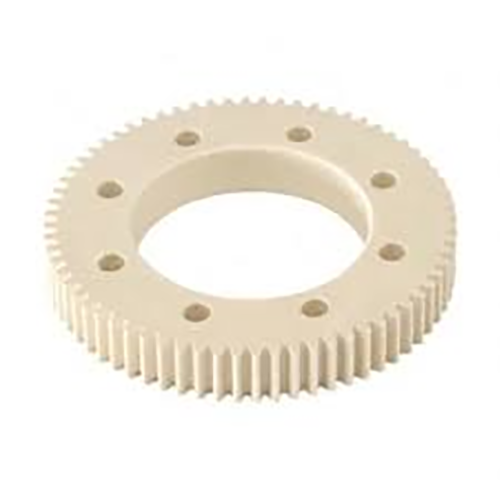
Attaining target exterior polish for a CNC part remains essential.
- CAD annotations convey exact surface criteria for production
- Many specifications reference Ra, an average roughness metric, for surface measurement
- Interpreting finish callouts is necessary to guarantee parts satisfy functional criteria
- Defined surface quality influences lubricant retention, coefficient of friction, and wear resistance
- Right interpretation of surface notes ensures attainment of the sought condition
Understanding Precision Engineering in CNC Machining

CNC-driven fabrication functions as a modern manufacturing method through G-code driven routines the hardware sculpts intricate parts accurately.
- CNC systems permit manufacture of precise components from diverse substrates
- CNC’s flexible capabilities match requirements of aerospace and automotive fields
- CNC processes produce uniform parts with high repeatability over runs
Across R&D to production scale-up CNC machining drives manufacturing evolution
Deciphering CNC Machine Specifications
Parsing spec sheets may feel challenging at initial inspection
Though a little background plus organization helps you interpret technical details effectively
Start with locating core parameters: spindle rpm, feed, accuracy, work envelope, controller
Each metric impacts the machine’s aggregate capability.
Illustratively, greater spindle rpm aligns with softer workpieces; increased feed raises manufacturing pace.
Seeing these associations aids in selecting the correct machine for your use
Be sure to refer to vendor documentation completely.
Maker resources usually present informative direction and demystify jargon
A Guide to CNC Machines: What You Need to Know
Automated CNC platforms are computer-commanded systems for precision manufacturing of multiple materials They process programmed G-code to regulate toolpaths and actuator behavior.
- Various CNC platforms encompass milling centers, turning lathes, routers, plasma systems
- CNC workflows handle steels, aluminum, plastics, woods, and composite laminates
- Additionally CNC gear supports fast prototyping and limited production for entrepreneurs and institutes
CNC Basics and Explanations
These tools showcase a blend of mechanical exactness and intelligent software command CNC platforms apply programming to fabricate both basic components and complex assemblies Underlying principle converts virtual designs into actual manufactured items.
- Programmed machining process
- CAD-to-CAM integration
It performs sequenced precise axis operations dictated by program Operators play a crucial role in selecting the appropriate cutting parameters monitoring the operation and ensuring the quality of the final product.
Surface Finish Effects in CNC Production
Producing expected finish through machining is important It strongly influences part functionality and visual appeal Material selection, cutting strategy, and finishing steps all influence final texture.
A smooth surface finish can enhance the product's durability while a rougher finish may reduce its effectiveness CNC machining processes offer a wide range of tools and techniques to achieve the specific surface finish for different applications.
- Including selection of alternative tool profiles |coated inserts|cutting velocit
 y selections to shape surface
y selections to shape surface - Also surface treatments such as grinding and polishing can refine textures
Appreciating the link between settings and surface quality helps achieve ideal finishes.
Understanding CNC Machines: A Beginner's Guide
Computerized machining precisely produces parts from metals, plastics, and other materials These machines follow digital instructions to execute intricate designs with high accuracy and repeatability Comprehending toolpaths, G-code, and tooling strategies supports effective machining
Use cases cover aerospace, automotive, medical, electronics, and more sectors From engine components to precision tooling, CNC enables production of sophisticated geometries
Surface Finish Specification Guidelines
Exact finish callout is important for CNC component manufacturing It secures that the final item meets both functionality and looks Callouts commonly use the roughness average (Ra) system to denote surface finish This numerical value expressed in micrometers inches or millimeters indicates the average height of surface irregularities.
Weigh required surface smoothness against intended use when defining callouts

For instance a smooth surface finish might be preferred for parts that require tight tolerances or precise alignment
Rugged finishes sometimes serve parts that need enhanced traction or grip
Apply clear finish annotations in technical drawings to state desired texture Include both the Ra value along with any additional instructions such as machining processes or surface treatments.
Bear in mind accurate finish callouts drive better manufacturing results
Varieties of CNC Machines and Capabilities
CNC machining spans many technologies and machine classes to address different operational needs They leverage CAD/CAM designs to instruct cutters for accurate and efficient fabrication.
- Drills bore precise holes with controlled feed and speed
- Grinders refine surfaces and achieve tight dimensional tolerances via abrasion
- Laser cutters harness concentrated energy beams to slice through materials with exceptional accuracy and minimal heat distortion
The choice of CNC machine depends on the specific project requirements materials being worked with and desired precision Unique machine capabilities support varied industry needs such as automotive, aerospace, and medical.
Achieving Optimal Surface Finish with CNC Machining
Achieving a superior surface finish is crucial in numerous manufacturing processes and CNC machining offers an exceptional method for achieving this goal Using accurate feed and speed selection plus optimized tool geometry technicians refine cutting action to reduce surface flaws Coupled with high-quality tools and correct fluid use, finish quality is elevated Well-chosen cutting tactics plus careful setup empower manufacture of parts with exceptional surfaces.
Realizing Finish through CNC Code
Tuning code to influence finish plays a central role in meeting quality aims Machining parameter combos such as feed, rpm, and tool geometry set the surface characteristics Deliberate parameter selection and optimized lubrication enable near-flawless finishes.
- Moreover scheduled tool maintenance and cnc machine definition inspection preserve surface performance Besides that systematic tool upkeep and monitoring ensure sustained surface quality Furthermore regular tool maintenance and inspection are essential for ensuring a consistent and high-quality surface finish over time
- For better finishes evaluate substrate, roughness goal, and functional context
- Virtual simulation provides a way to optimize feeds and speeds before cutting
- Moreover scheduled tool maintenance and inspection preserve surface performance
